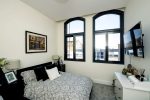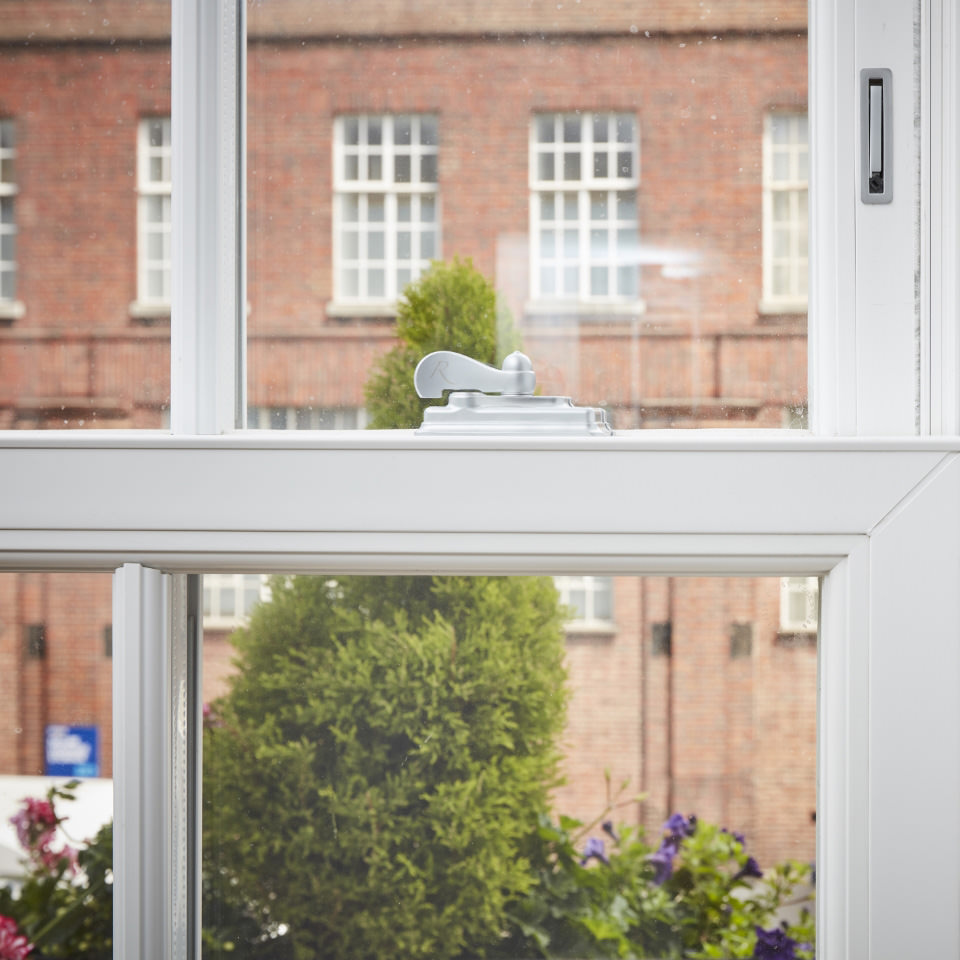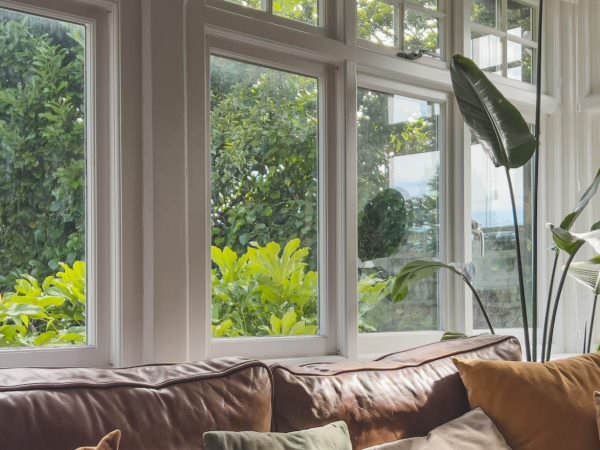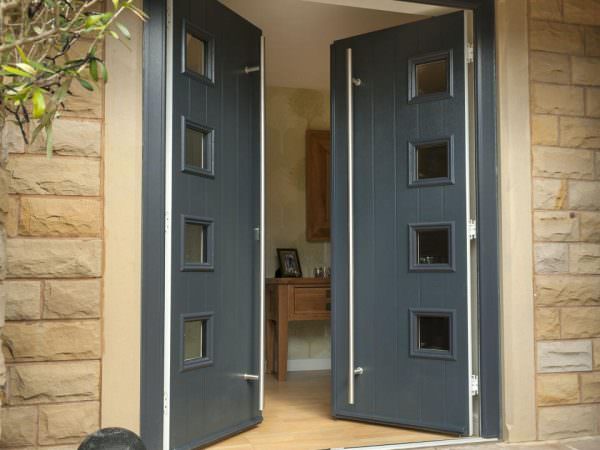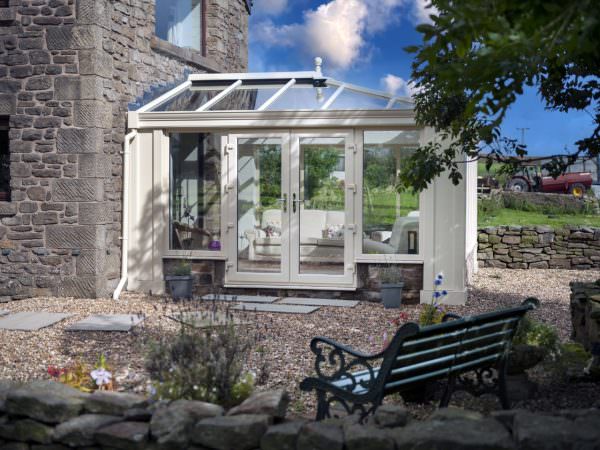What is secondary glazing and what are the benefits?
Secondary glazing is adding a second panel to your preexisting single-glazed windows, as opposed to removing your current windows and reinstalling double-glazed windows, which can be time-consuming and expensive.
Secondary glazing is a great way to enjoy the warmth, security and quietness of double glazing without replacing your existing windows.
Secondary glazing is one of the best ways to reduce noise and soundproof your windows. It can reduce external noise by around 75%. This can be enhanced further by specifying either Laminate glass or Stadip Acoustic Glass. Secondary glazing is ideal for reducing noise and draughts. It is easy to fit, very affordable, and made from strong and slim aluminium. It makes for a great long-term investment.
By installing an extra-slimline window with a 100mm gap to existing windows, draughts can be reduced, and heat insulation improved. With secondary glazing, you can enjoy newfound warmth, security, and comfort in your home. Made from slim and robust aluminium, this product is affordable and long-lasting. Thus, a secondary glazing installation makes for a wise choice for your home in Hampshire with endless benefits.
Andover & Hampshire
Aluminium Secondary Glazing
Secondary glazing is particularly useful when replacement windows are not suitable for traditional, listed buildings, conservation areas, or properties that don’t need window replacements. The slim aluminium frames are strong and durable, providing many years of service. We install and supply secondary glazing across Hampshire, Wiltshire, Dorset, Berkshire, and Surrey.
Secondary window glazing involves adding an extra slim-line window to the inside of existing windows. KJM’s units are manufactured in England from robust and lightweight aluminium. They can be directly fixed to the existing single glazed windows or manufactured with a subframe to allow for either the reveal fixed or face fixed. The wood used for the subframe is either MDF (medium-density fibreboard), Luan (dark hardwood), or Tulip (pale hardwood).
Stadip Acoustic Secondary Glazing Glass for the Best Performance
Secondary Glazing Sound Insulation
The gap between the original window and the new secondary glazing is one of the most important aspects of sound insulation to consider. If the secondary glazing is fitted correctly, you can enjoyed improved acoustics and keep the inside noise in your Hampshire home.
At KJM, we use Stadip Silence glass, a laminated product from Saint-Gobain. Laminated glass is a sandwich made of one piece of plastic Polyvinyl Butyral (PVB) between two or more glasses. The PVB in Stadip glass is a special acoustic interlayer—PVB Silence®. This layer acts like a dampening core between the two panes of glass. It prevents vibration, eliminating the problem of the critical frequency and, thus, the acoustic peaks at high frequencies.
Andover & Hampshire
To what extent does secondary glazing reduce sound pollution in the home?
Aluminium secondary glazing improves heat and sound insulation in your existing windows. Adding acoustic glass can improve sound reduction even further. To achieve up to 80% acoustic performance, KJM recommends specifying acoustic glass and an air cavity no less than 150mm—200 mm glass to glass. If you live in a loud neighbourhood or by a road, secondary glazing can make a real difference.
Secondary Glazing Options
Secondary glazing is one of the best ways to reduce noise and soundproof your windows. It can reduce external noise by around 75%. This can be enhanced further by specifying either laminate glass or Stadip Acoustic Glass. Draught proofing is the other most common reason for a secondary glazing installation.
For even better thermal performance, security, and sound reduction, you can specify Pilkington K Low-e glass and flyscreens into our secondary glazed systems, which retain your home’s unique style.
The most common systems manufactured are sliding window units, which can be either horizontal or vertical. However, tilt-back vertical sliders, hinged units, lift-out units, and fixed units are available.
Butt Hinged and Lift Out Secondary Glazing
Butt-hinged secondary glazing comes as either a single or double-panelled unit. The butt hinges give a large clear opening which allows for easy maintenance and cleaning, as they are made from slim and strong aluminium. The butt hinges allow for the secondary unit to open fully from its side-hung position, but our friction-hinged secondary glazing is available in both top and side-hung styles.
Alternatively, the secondary glazing standard lift-out is a removable secondary glazing panel within its own outer frame that is fixed to the face or reveals the existing primary window. The integral finger lift bar at the bottom of the panel allows it to be lifted into the top of the secondary window outer frame and then swung inwards to facilitate removal.
Tilt Back Balanced Vertical or Horizontal Sliding
Designed to match existing sash windows, our tilt-back balanced vertical sliding secondary glazing for sash windows is one of our most popular products. It reduces noise and heat loss, is easy to fit, and is very affordable. Our vertical sliders are made from slim and strong aluminium. As the panels are balanced, they reduce the effort required to slide them up and down and remain in position at whatever height you leave them. By operating finger latches, the panels can be tilted inwards for easy cleaning.
Our horizontal sliding secondary glazing is highly versatile, slides smoothly, and is available with two to five panels. Horizontal sliders are perfect for sound and thermal insulation for casement windows, hinged windows, or any window with vertical bars. Panels slide within the frame, allowing easy access to the existing outer windows and providing ventilation without interfering with curtains or blinds.
Secondary Glazing Prices Andover & Hampshire
Thinking about secondary glazing? Secondary Glazing prices?
Secondary glazing generally costs less than having double glazing installed, and the installation is more straightforward, less messy, and quicker. Thus, you can reap the benefits of double glazing while keeping your home’s personality.
Quoting is easy. You can use our online bespoke quoting engine for an instant price. We can advise and price for you without a home visit. The made-to-measure secondary glazing will fit perfectly in your home. Contact us today for a secondary glazing quote for Andover, Hampshire, and the surrounding areas. All of our secondary glazing quotes come with no hassle, allowing you to decide in your own time.
Secondary Glazing FAQ's
To what extent does secondary glazing reduce sound pollution in the home?
Secondary glazing correctly specified and installed will acoustically outperform all other types of glazing, including new windows and even triple-glazed ones. Installing good secondary glazing is really the best option. To achieve up to 80% acoustic performance, KJM recommends the specification of acoustic glass and an air cavity no less than 150mm—200 mm glass to glass.
Is secondary glazing as good as double glazing?
Secondary window glazing is a fantastic option if sound insulation is your ultimate goal. It provides much better levels of acoustic insulation than double glazing because you can create a much more significant gap or cavity between the panes of glass. Secondary glazing offers a far better sound-dampening effect than double-glazing, as most double glazed units only have a 16mm or 20mm gap. If the quality of your primary window is poor, then the correct starting point is for repair or replacement; adding secondary glazing as well can reduce sound levels by as much as 70 to 80%. It is an easy way to introduce three different thicknesses of glass, the ultimate way to improve sound insulation.
Double glazing or even triple glazing offers better thermal performance than secondary glazing. Finally, if you live in a listed building, secondary glazing may be your only option for heat and sound insulation.
How much does secondary glazing cost?
Secondary glazing costs are usually less in pricing than having double glazing installed. Variables affect the costs. These include the size of the window, opening style, glass choice, heavy-duty or budget systems with slimmer profiles, and installed cost or supply only.
Quoting with KJM is simple. All we need is a photograph of the existing window and some sizes. We can advise and price for you without a home visit. If you are looking for an instant price for any of our double glazing windows, then you can use our free quoting engine for an instant price.
What does secondary glazing look like?
Simply put, it is panes of glass in an aluminium frame fixed to your window that reveal the inside face of your window frame. The first scenario is ‘reveal fixed,’ and the second is ‘face fixed.’ The units can be sliding, hinged, or lifted out. A secondary glazed window means leaving the existing primary window in place and adding a second window. A terrific benefit for those in traditional homes. Adding a secondary window panel will enhance your home immensely.
Does secondary glazing add value?
Secondary glazing will make your home more desirable to potential homeowners. The secondary glazing benefits include reducing the noise which will be noticeable for you and a future buyer when trying to work or sleep in your home and is a a great selling point. Potential purchasers will hear the noise if you don’t have sound-reducing glazing, and they may be put off buying your home. The added benefit of heat insulation will also save on both heating and cooling bills, which is particularly important if you have single glazed windows. So, this is both a short-term and long-term improvement.



